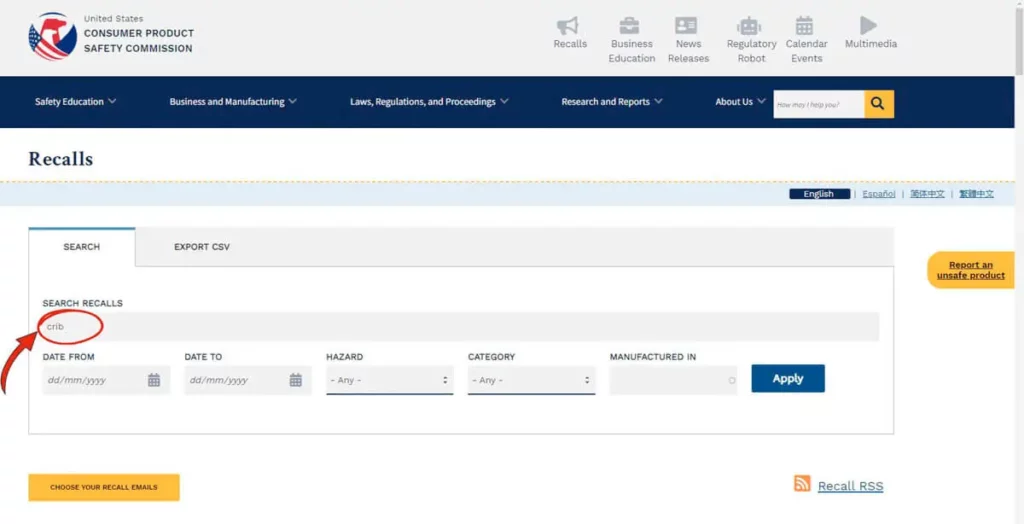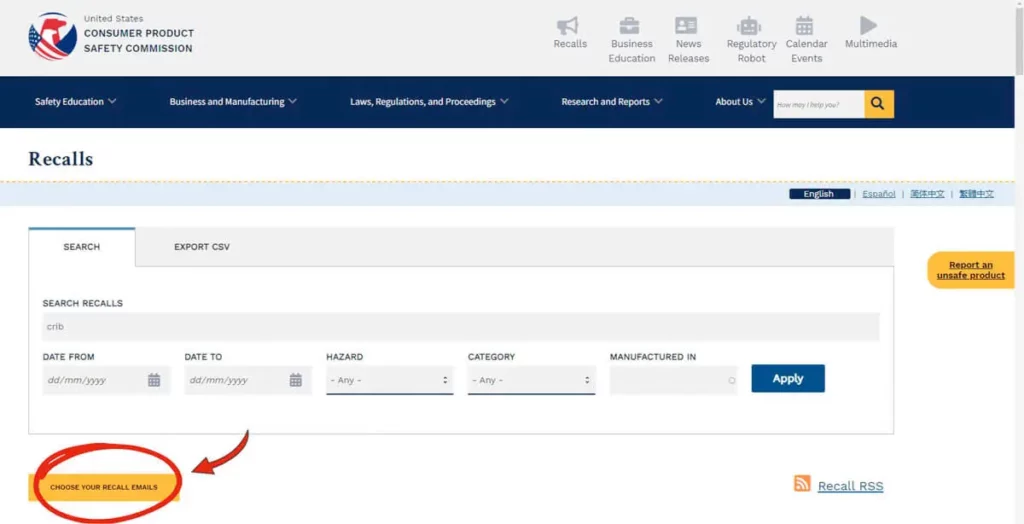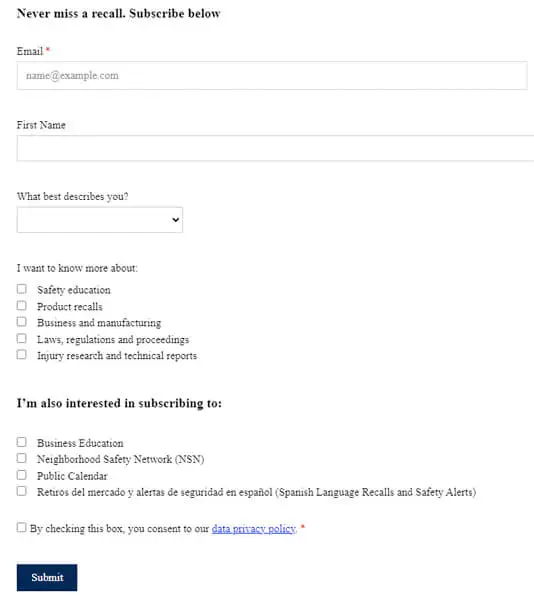
Imagine this: you’ve just put your baby down in their crib, confident that they are snuggled in for a safe and restful sleep. But did you know that this peaceful moment could be compromised by something as overlooked as a crib recall?
Why Should You Stay Informed About Baby Crib Recalls?
Unfortunately, cribs that once met safety standards are recalled every year due to newly discovered hazards. Recalls can happen for different reasons, from minor hardware issues to more dangerous design flaws. The crib you’re using now, loved for its design and comfort, might have hidden dangers that a recall notice could bring to light.
Tips for Keeping Up with Crib Recalls
I know staying informed about every product recall may feel overwhelming, especially considering how busy life can get with a new baby. But keeping up with recall information isn’t as daunting as it might seem. And trust me, the peace of mind you get in return is worth the effort.
To help you with this process, I have described the strategies and tools required to stay alert to crib recalls. By using them, you will easily find out if there are any recall information about your crib.
How to Keep Up with Crib Recalls:
Getting the latest crib recall information is easier than you think. There are a few simple and effective ways to stay informed:
1. U.S. Consumer Product Safety Commission (CPSC) Recalls
The U.S. CPSC is dedicated to keeping you up-to-date on the latest safety news and recalls. You will get the right information straight from a reliable source.
Now, what’s the most efficient way to receive these updates? Sign up for email alerts. This way, you’re always one step ahead, receiving notifications as soon as a recall is announced.
Also, don’t forget the importance of product registration. It’s a crucial part of staying in the safety loop. When you buy a crib, make sure you fill out and return the product registration card.
→ Step-by-Step Process of Finding a Crib Recall on the CPSC Website:

- Go to the CPSC website on a recalls section → CPSC Recalls
- You will see a search bar and filter options. Type “crib” into the search bar.
- Optionally, you can use filters to narrow down the search by date, company, or product type.
- Browse the search results to find the specific crib recall you are interested in.
→ Subscribing to the CPSC Email List:

- Click on the “Choose your recall emails” button
- Select your preferences and click on the “Submit” button

2. Additional Tools and Resources for Finding Crib Recalls
Consumer Affairs and SafeKids.org are fantastic sites that offer a wide range of advice and recall alerts. Just like the CPSC, they are dedicated to your child’s well-being.
Vital Lessons from Past Crib Safety Issues
Looking back at past recalls can teach us a lot about crib safety. After all, learning from history is key to a safer future.
I have reviewed past safety problems and recalls of baby cribs. I will explain the main reasons behind some of the most notorious ones.
1. Recall of Drop-Side Cribs:
Drop-side cribs, once a popular choice for many parents, were recalled widely between 2009 and 2011. The design, which allowed one side to move up and down, proved to pose a severe danger. Sadly, it has caused numerous entrapments and even suffocations.
Drastic measures were needed. Some of the biggest recalls were from Delta and Stork Craft. In October 2008, Delta recalled over 1.6 million cribs. And in November 2009, a significant recall involved over 2.1 million Stork Craft drop-side cribs. Of course, the drop-side crib recall also affected other brands, such as Simplicity Inc., Evenflo, Graco, and more.
The recalls were part of an effort to make cribs safer. They led to the banning of drop-side cribs in the United States. New crib safety standards introduced in 2011 now forbid the manufacture and sale of drop-side cribs.
2. Recall due to Bad Mattress Support:
Another design that has caused concern was cribs with problematic mattress supports. The issue here is that without stable, robust support, there’s a risk of mattress support failing. That creates dangerous gaps where a baby could become trapped, leading to a risk of entrapment, suffocation, or falls.
Ikea’s SNIGLAR crib and several from Delta Enterprise Corp are examples of this. And it’s not just about the big brand names. Recalls in 2010 also affected multiple other manufacturers, leading to the largest crib recall of 2 million units.
In response to these ongoing problems, the CPSC now requires more robust construction and stricter testing for crib mattress supports.
What to Do if Your Crib is Recalled
Now, if you ever find yourself with a recalled crib, don’t panic. The best action is to stop using it immediately. Trust me, it’s a headache no one wants to deal with, but it’s a necessary step.
Then, follow the manufacturer’s or the CPSC’s instructions for a fix. They might send you repair kits or provide guidelines for returning the crib. Use only parts provided by the manufacturer for repairs; substituting can lead to new hazards.
Secure Cribs for Peaceful Dreams
When it comes to the safety of your little one, nothing should be left to chance. While crib recalls can be alarming, they also serve as a strong reminder to be proactive in ensuring our babies sleep securely. To that end, choosing the right crib is a foundational step.
Opting for a new crib rather than a pre-owned one vastly reduces the chance of encountering safety issues, as they comply with the most recent safety standards.
If you need to buy a used crib because of your budget, it’s important to check it carefully. Make sure it hasn’t been recalled. Look for a strong structure, intact finish, and no signs of damage. Shake the crib to ensure it feels sturdy and doesn’t wobble or have any missing parts.
However, your path to crib safety doesn’t end with a purchase; it’s ongoing. Register your crib as soon as you receive it to stay on top of possible future recalls. Carefully follow the manufacturer’s assembly instructions. Periodically check all crib components to ensure they remain in good condition.
Lastly, it’s important to know where to find reliable safety information. Your watchfulness is the first line of defense. By staying informed, watchful, and ready to act, you can feel more at ease knowing your baby will too.
We value your experiences and insights! Please share your thoughts, experiences, or additional tips related to crib safety in the comments section below. Your input can help create a safer environment for all parents and caregivers.
